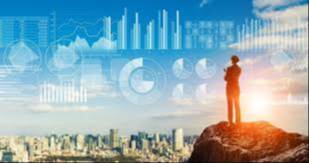
2025-02-14 16:43
IndustryEconomic Forecasting: Methods and Challenges
#Firstdealofthenewyearastylz
Economic forecasting involves predicting future economic conditions based on historical data, economic indicators, and various analytical methods. It is widely used by governments, businesses, and investors to make informed decisions.
Methods of Economic Forecasting
1. Qualitative Methods
These methods rely on expert opinions and judgment rather than numerical data.
Delphi Method: Experts answer questionnaires in multiple rounds, refining their opinions based on group feedback.
Market Surveys: Business executives and consumers are surveyed about their expectations for economic conditions.
Scenario Analysis: Different possible future economic scenarios are developed based on various assumptions.
2. Quantitative Methods
These rely on mathematical and statistical techniques to analyze past trends and make projections.
Time Series Analysis: Uses historical data to identify patterns and project future trends.
Common techniques include:
Moving Averages: Smooths data to identify long-term trends.
ARIMA (Auto-Regressive Integrated Moving Average): Captures complex relationships in economic data.
Econometric Models: Uses equations based on economic theory to forecast variables.
Single-Equation Models: Estimates the relationship between a dependent variable (e.g., GDP) and independent variables (e.g., interest rates, inflation).
Simultaneous Equations Models: Uses multiple interrelated equations to model economic systems.
Machine Learning and AI:
Neural Networks and Random Forests analyze large datasets to detect complex patterns.
Big Data Analytics integrates real-time data sources for better forecasting accuracy.
Challenges in Economic Forecasting
1. Data Limitations
Inaccurate or Incomplete Data: Economic data is often revised after initial publication, affecting forecast reliability.
Lag in Data Availability: Many economic indicators are published with a delay, making real-time forecasting difficult.
2. Uncertainty and External Shocks
Global Events: Pandemics, financial crises, or geopolitical conflicts can disrupt forecasts.
Policy Changes: Unexpected fiscal or monetary policy shifts (e.g., interest rate changes) impact economic predictions.
3. Model Assumptions and Bias
Simplified Assumptions: Many models assume stable relationships between economic variables, which may not hold in reality.
Behavioral Factors: Human psychology, irrational decision-making, and market sentiment are difficult to quantify.
4. Structural Changes in the Economy
Technological Disruptions: Innovations (e.g., AI, automation) can rapidly alter economic productivity and employment trends.
Demographic Shifts: Aging populations and migration patterns influence labor markets and growth rates.
5. Policy and Measurement Issues
Changes in Measurement Standards: Definitions of inflation, employment, and GDP may be revised, affecting comparability.
Government Intervention: Policies such as stimulus packages can distort short-term forecasts
While economic forecasting is essential for decision-making, it remains an imperfect science due to data limitations, unpredictable external shock.
Like 0

Annelove
Broker
Hot content
Industry
Event-A comment a day,Keep rewards worthy up to$27
Industry
Nigeria Event Giveaway-Win₦5000 Mobilephone Credit
Industry
Nigeria Event Giveaway-Win ₦2500 MobilePhoneCredit
Industry
South Africa Event-Come&Win 240ZAR Phone Credit
Industry
Nigeria Event-Discuss Forex&Win2500NGN PhoneCredit
Industry
[Nigeria Event]Discuss&win 2500 Naira Phone Credit
Forum category

Platform

Exhibition

Agent

Recruitment

EA

Industry

Market

Index
Economic Forecasting: Methods and Challenges
 Hong Kong | 2025-02-14 16:43
Hong Kong | 2025-02-14 16:43#Firstdealofthenewyearastylz
Economic forecasting involves predicting future economic conditions based on historical data, economic indicators, and various analytical methods. It is widely used by governments, businesses, and investors to make informed decisions.
Methods of Economic Forecasting
1. Qualitative Methods
These methods rely on expert opinions and judgment rather than numerical data.
Delphi Method: Experts answer questionnaires in multiple rounds, refining their opinions based on group feedback.
Market Surveys: Business executives and consumers are surveyed about their expectations for economic conditions.
Scenario Analysis: Different possible future economic scenarios are developed based on various assumptions.
2. Quantitative Methods
These rely on mathematical and statistical techniques to analyze past trends and make projections.
Time Series Analysis: Uses historical data to identify patterns and project future trends.
Common techniques include:
Moving Averages: Smooths data to identify long-term trends.
ARIMA (Auto-Regressive Integrated Moving Average): Captures complex relationships in economic data.
Econometric Models: Uses equations based on economic theory to forecast variables.
Single-Equation Models: Estimates the relationship between a dependent variable (e.g., GDP) and independent variables (e.g., interest rates, inflation).
Simultaneous Equations Models: Uses multiple interrelated equations to model economic systems.
Machine Learning and AI:
Neural Networks and Random Forests analyze large datasets to detect complex patterns.
Big Data Analytics integrates real-time data sources for better forecasting accuracy.
Challenges in Economic Forecasting
1. Data Limitations
Inaccurate or Incomplete Data: Economic data is often revised after initial publication, affecting forecast reliability.
Lag in Data Availability: Many economic indicators are published with a delay, making real-time forecasting difficult.
2. Uncertainty and External Shocks
Global Events: Pandemics, financial crises, or geopolitical conflicts can disrupt forecasts.
Policy Changes: Unexpected fiscal or monetary policy shifts (e.g., interest rate changes) impact economic predictions.
3. Model Assumptions and Bias
Simplified Assumptions: Many models assume stable relationships between economic variables, which may not hold in reality.
Behavioral Factors: Human psychology, irrational decision-making, and market sentiment are difficult to quantify.
4. Structural Changes in the Economy
Technological Disruptions: Innovations (e.g., AI, automation) can rapidly alter economic productivity and employment trends.
Demographic Shifts: Aging populations and migration patterns influence labor markets and growth rates.
5. Policy and Measurement Issues
Changes in Measurement Standards: Definitions of inflation, employment, and GDP may be revised, affecting comparability.
Government Intervention: Policies such as stimulus packages can distort short-term forecasts
While economic forecasting is essential for decision-making, it remains an imperfect science due to data limitations, unpredictable external shock.
Like 0
I want to comment, too
Submit
0Comments

There is no comment yet. Make the first one.

Submit
There is no comment yet. Make the first one.